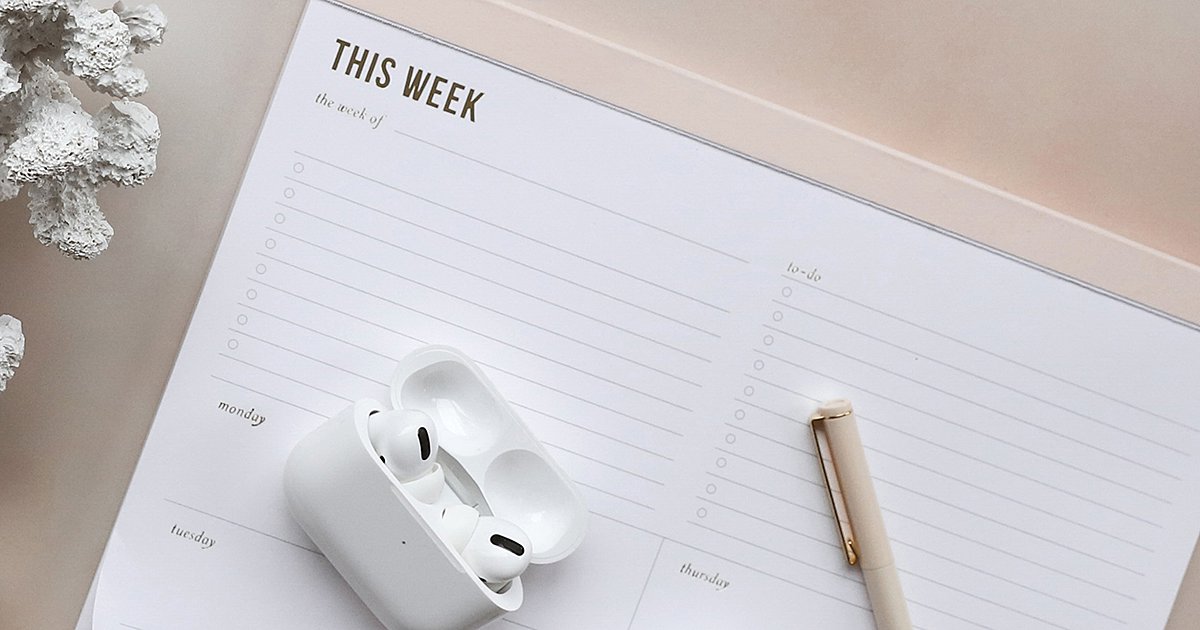Introduction
Welcome to the Simplifying Legal podcast, brought to you by Businessese. I’m your host, Danielle Liss.
Many years ago, someone told me I was the least lawyer-y lawyer she’d ever met because I helped make legal easier to understand. To this day, it’s one of the best compliments I’ve received in my professional life.
If you’ve ever felt legal was too scary, too overwhelming, too complicated, or just plain incomprehensible, you’re not alone. The Simplifying Legal podcast was created to help.
In each episode, we’ll do a deep dive into a legal topic and give you concrete next steps so you can apply it to your business.
My goal is for you to walk away from each episode thinking, oh, that was easier than I thought it would be.
Let’s get started.
Episode Content
Hey there, I’m Danielle. Welcome to Episode 52 of Simplifying Legal for Small Business Owners. Today, I’m talking about managing proposals and contracts.
Disclaimer: As always, before we get into today’s topic, a quick disclaimer. This podcast is meant to provide you with legal information only. It’s not legal advice and doesn’t create any type of attorney-client relationship between us. Please don’t take any action without consulting your lawyer first.
Through my law firm, I am involved in drafting client agreements for a lot of small businesses. During the initial stages, one of the most important conversations we have is about how they acquire their clients. What does their sales process look like? For example, do they use discovery calls, sales pages, or proposals? Once I understand more about how their business works, I can make better recommendations on how to structure the best possible client agreement for them.
And of course, since the businesses vary, so do the sales tools. While sales pages are definitely more common for digital products, like courses, many of the service-based business owners I work with use proposals as part of their sales cycle. Today’s episode is all about how to manage proposals and contracts.
What Is a Proposal?
To get started, let’s address a key point: what is a proposal? A business proposal is typically used during the sales process. It’s a tool that allows you to position your business and services and it’s there to help you close the sale.
In terms of timing, a proposal often comes after a discovery call, but before the client agreement. The goal of the proposal is to outline the services that you offer and other key terms so that the client can agree to the package that you are presenting.
As someone who learns best from examples, I want to walk you through how this looked in my own business as I hired a service provider. When I started my law firm, I built my own website on Squarespace. It was absolutely fine for the early stages of my business. But, eventually, I wanted a more customized design and a more client-centered focus.
I reached out to Crystal at Marketing Queen because I knew she had a strong focus on building accessible websites and I liked her portfolio. During the discovery call, she asked me questions and the call was centered on our discussion of my goals for the site. I was able to ask some general questions about her packages so I had a good idea if we were a potential fit to work together. But, we didn’t discuss every single detail. It wasn’t a full presentation of every possible service package she offers.
After the call, she put together a proposal that outlined the details. It was a full overview of what it was like to work with her. She outlined a package for me based on my goals. It had the key information regarding timing, pricing, and deliverables. Then, if there were adjustments, I could request changes or I could accept the proposal. Once I accepted the proposal, I received a contract that outlined the full terms.
For me, it was a really easy process at the time, but it’s also a great example to demonstrate a great implementation of the proposal to contract cycle.
How Does a Proposal Differ from a Contract?
One of the biggest questions I hear from service business owners is, I use proposals and contracts, but I don’t know how they should be different. This is a really important point and, honestly, the main goal of this episode is to help clear up any confusion about this issue.
A proposal is a sales tool. It is your chance to show off your business and set your packages apart from your competitors. It may have some legal language in it, but there are also things you wouldn’t necessarily include in a contract, like background information about your business or testimonials. Usually, a proposal will not include every term that you include in your contracts, although I have certainly seen some proposals that attach terms and conditions.
In comparison to your contract, your proposal is most similar to the statement of work or description of services that you would include in a client agreement.
On the other hand, your contract is the legally binding agreement between you and your client. This is what will lay out all of the details of your relationship, including the legal piece, plus the deliverables that would be included in a statement of work. I’ll talk more in a couple of minutes about the contract side of the proposal-to-contract cycle.
What Should Be Included in a Proposal?
If you want to start using proposals, you may be wondering what to include in the document, beyond a description of the deliverables. While I regularly talk about marketing from a legal perspective, I am not a marketer. So I tend to go to the marketing and sales experts for some aspects.
I’m going to link to a blog post called Business Proposal Ideas to Win More Clients from Small Business Boss because I think it has a good overview of some of the things you can consider for your proposals. I first learned the finer points about creating strong proposals from Small Business Boss, so they are my go-to experts.
Your proposal should talk about what it will look like for you and the potential client to work together, including things like the services you offer and timing of the project. You can also use a proposal as a place to give more information about your business and use it as a way to position why they should choose you over a competitor. You can also talk about working with your company and any relevant policies.
Your proposal may include some of the terms that you will also list in your contract, like ownership rights or the number of drafts you provide at that price point.
You may also want to put an expiration on the proposal. Please note that I am not recommending this to create a false sense of urgency. Instead, this is to ensure that they are committing to the pricing that you are offering at the time and that you are able to meet the timelines if you have included any specific dates.
I also recommend including a short overview of what will happen after they accept the proposal. For example, advise them that they will next receive their contract, then any other next steps.
Creating Proposals
If you think that proposals make sense for your business, there are many tools to help you with the process. I’ll link everything I mention in the show notes.
Proposal Education
First, if you’re new to proposals and you aren’t sure what to include, you may want to consider checking out some additional educational tools. Or, if you’re already using proposals and you want to uplevel the experience and process, you may also be looking for more info.
I love the workshop Pitch Perfect Proposals from Small Business Boss. At $35, it’s a great price to learn more about what to include and how to structure your proposal to help you close more business. Plus, you get a great workbook that helps you figure out what to include in your proposals.
Proposal Tools
If you’re interested in tools to help you create and monitor proposals, there are software options. Two that are regularly recommended are Bidsketch and Proposify. These tools have some additional features like increased data that you can analyze about how prospects view your proposals.
CRM
Many service businesses also use their CRM for proposals. CRM stands for customer relationship management. Depending on the software you use, it may have different features. A tool like Dubsado has the option to send proposals and create easy workflows to send your contract after a proposal has been signed. This is a really popular tool for many service business owners.
Custom Proposal Templates
If you prefer to create a custom template, there are many options available. Of course, you could work with a designer, or you can purchase templates. I know my friends at Small Business Boss are working on a new product that has an amazing proposal template. (And don’t worry, I asked and they said it was okay if I share the upcoming release.)
Should Clients Sign Proposals?
Now, once you start sending proposals, you may wonder if you should have clients sign the proposal. I think it’s really helpful to get a signature or something else that indicates their agreement to the terms that you’ve included in the proposal. If you don’t get a signature, you might have an option for them to check a box that says they’re accepting, rather than a signature.
While it isn’t the same thing as a contract, it does show you that they have reviewed and accepted what you’ve outlined. If there are changes, you can either update before signature or indicate the changes in some other way.
The Contract Phase
Once the client accepts the proposal, then you’re ready to move to the contract phase. Here, I recommend having a strong client agreement. I’ve talked a lot about client agreements in the past, so if you need a refresher about what to include, I recommend checking out episode 18, Client Agreements for Service Business Owners.
Addressing Proposals in Your Contract?
If you use proposals, one of the biggest things to consider is how to address the proposal within your contract. Typically there are two options for how to handle this in your client agreement.
First, if you want the proposal to serve as the statement of work for your client agreement, you can incorporate the proposal as a part of your contract.
For example, you might say something like:
Client has accepted and signed a proposal, which outlines the scope of work to be provided. The proposal is incorporated as an exhibit into this agreement by reference.
If you decide to do this, please make sure that your proposal doesn’t need any changes to the deliverables or timing. If it does, make the changes or consider if you want to include a separate, updated statement of work in the contract.
This brings me to the second option for your client agreement, which is to include a statement of work as part of the contract. If you don’t want to incorporate the proposal as part of the agreement, you can restate the deliverables in the statement of work. This would essentially be a listing of everything from the proposal. It might also have the timelines, or a project start date, depending upon what is most important.
When it comes to your proposal, please make sure that the contract and proposal match. For example, if it states in the proposal that the client will receive a certain number of drafts, ensure that these details are the same.
If the documents don’t match, and you’re incorporating the proposal as an exhibit, you should indicate which document controls in the event of a conflict between the terms.
The Proposal to Contract Cycle
Before I wrap up, I want to review a simple overview of what the usual proposal-to-contract cycle can look like.
After a client inquiry or outreach, you’ll likely continue the conversation in some way. Whether that is through email or a discovery call may depend on your business. Once you have enough information, you’ll then move to the proposal phase. Then, the client will review and it will be up to them to determine if they accept the proposal. Depending on their feedback, you may also send a revised proposal with different deliverables or an adjusted budget or timeline.
After the proposal has been accepted, you should then move to the contract phase. After the contract is signed, many service-based businesses will then move to sending the initial invoice and collecting the deposit. Then, it’s time for the project to start.
Action Steps
This wraps up my tips on managing proposals and contracts. Now let’s talk about today’s action steps.
- Do you use proposals in your business? If you do, is there anything you need to adjust to ensure that the proposal-to-contract cycle runs smoothly?
- If you don’t use proposals in your business, please don’t feel like you immediately need to incorporate them. If it makes sense and you want it as a sales tool, then definitely look into it. You can go straight to a contract if that makes sense for your business. A proposal is not legally required prior to sending a client agreement.
- Once your proposal is accepted, are you either incorporating the proposal into your agreement, or are you converting portions of the proposal into a statement of work? Regardless of how you handle it, make sure your client agreement either includes or refers to a thorough statement of work.
- Last, as always, if you have questions about managing proposals or client agreements, please contact your lawyer. I regularly work with clients on this through my law firm, Liss Legal, and I’d be happy to discuss to see if we would be a good fit to work together. If you’d like to learn more, visit LissLegal.com.
Thanks for joining me for today’s episode of the Simplifying Legal Podcast. Please subscribe if you haven’t already.
I’d love to connect with you outside of the show. Visit Businessese at businessese.com. To find show notes for today’s episode, visit businessese.com/podcast.
If you like the podcast, I’d love it if you give the show a review in Apple Podcasts, Stitcher, or wherever you listen to podcasts.
If you have any questions, you can reach out via email at: [email protected].
Thanks for listening and we’ll continue Simplifying Legal on next week’s episode.





